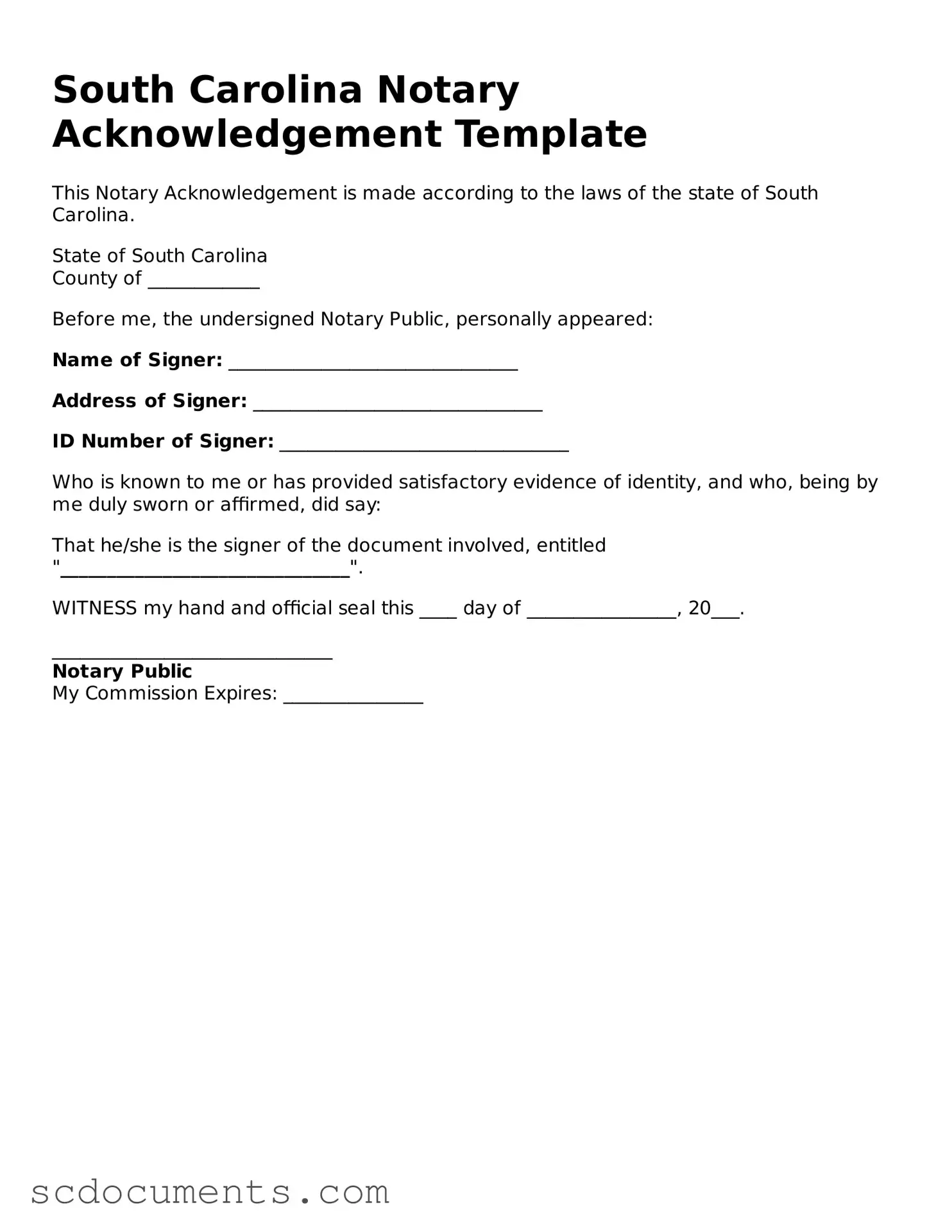Legal South Carolina Notary Acknowledgement Form
The South Carolina Notary Acknowledgement form is a legal document used to verify the identity of individuals signing a document. This form ensures that the signatures are authentic and that the signers understand the contents of the document. By completing this form, notaries help to prevent fraud and provide assurance in legal transactions.
Access My Notary Acknowledgement
